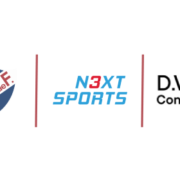In this interview, we dive into the digital transformation at United World Wrestling. Gordon Templeman is the Director of Commercial Operations and Communications for United World Wrestling (UWW), the governing body of wrestling globally. He joined in 2014, when wrestling was reinstated back onto the Olympic program.
1. Why did UWW prioritize digital transformation in its strategic planning process for the next few years?
This was the natural progression and one step further along the path of modernizing the sport of wrestling which was initiated back in 2014 when Nenad Lalović became the president of United World Wrestling. His election sparked the beginning of drastic reforms and brought a fresh perspective to a sport that had resisted change for so long. This led to rapid changes in a short period of time, which consisted of (1) rebrand the federation (2) update the rule sets (3) elevate the sport presentation (4) more emphasis on grassroots and development programs (4) improve broadcast coverage (5) prioritize digital communication and social media activity.
In the past two years, we have maintained steady growth across all facets of the sport of wrestling and aim to continue in this trajectory. However, this is not always guaranteed especially in an ever-changing sports landscape. To stay relevant and sustain healthy growth, we recognized the importance of new trends, such as the increased relevance of digital, the emergence of data-driven decision making, as well as an ever-increasing shift to mobile. To conclude it was a combination of where we were as an organization aligning with current trends of the sports industry that had us prioritize a digital transformation.
2. What is the digital marketing and content approach for UWW?
Content is an integral part of everything we do at UWW. We take a tremendous amount of pride to find a balance of content that engages and keeps it fresh while remaining authentic to the athletes and everyone who plays a part in our sport. Early on we understood that we had a very passionate audience and it was our goal to maintain a dialogue and to continue to foster this relationship. The second step was to look at a broader scale and bring someone who has an interest in wrestling, but also those who are interested in other sports or other forms of entertainment.
Our content is driven by the competitions, and the stories of our athletes. Finding nuance and new angels of storytelling around the sport is how we were able to organically grow across all our social media platforms even during the pandemic. By ensuring a steady content production schedule with clear segmentation of that content, it became easier for us to track the level of engagement and what works.
3. What’s the role of digital and data when it comes to attracting new partnerships, renewing the current ones, or dealing with broadcasting rights?
In my first television deal for UWW, the broadcaster was only negotiating the linear rights. Digital assets were an afterthought. Fast forward to 2021, the landscape has changed completely. Digital is a vital area, requiring its own sales & marketing process. This is where data plays a crucial role.
In the linear broadcasting space, measurement methodologies have developed and matured over the past decades, so everyone knows how to value these figures when they receive the research or viewership reports. On digital, we are still in a transitory phase, where the gold standard for measurement has not been reached. In this phase, data is supporting our partnership process in many ways, both on the sales side but also on the analytics and servicing side.
On the sales side, we can now approach partners with a holistic offering for wrestling that covers linear and digital, with an understanding of the types of audiences that can be reached on these platforms. On the analytics side, we have a more comprehensive way of reporting on all of our assets, through detailed, geographic, socioeconomic and behavioral data. In the end, this helps deliver on the expectations of the client and is backed by data.
It is important to value data, and ensure data fluency across the organization, and shift the sales process to become more data-driven. It is a journey we are now on, and part of our digital transformation strategy.
¨To stay relevant and sustain healthy growth, we recognized the importance of new trends, such as the increased relevance of digital, the emergence of data-driven decision making, as well as an ever-increasing shift to mobile.¨
4. As an International Federation, you are an orchestrator of a global ecosystem of stakeholders? How does your own digital transformation support them and the sport of wrestling overall?
The sport of wrestling relies on a highly passionate community of athletes, national federations, event organizers and media partners, amongst others. UWW’s duty and responsibility to this global family of wrestling is to promote and develop wrestling of all styles under our governance and to be the best accessory for Wrestlers and for the sport of Wrestling. It has become clearer in the past few years that to continue delivering on our core commitments to the sport of wrestling and the global wrestling family, we would need to respond to the changing landscape around sports.
Through digital transformation, tapping into data and innovation, we can make this happen. Our stakeholders can rely on us in the future to deliver more services, more value, with more efficiency. To do this, we must always work with our stakeholders, to decide on the priorities and balance their needs with the trends. Once our digital strategy is formally approved internally and by our national federation members, we will ensure that all athletes, partners and other stakeholders make the strategy practical for everyone.



